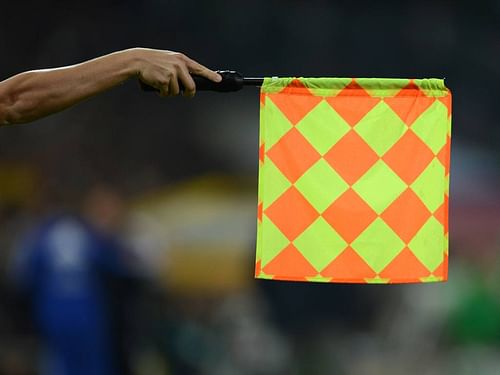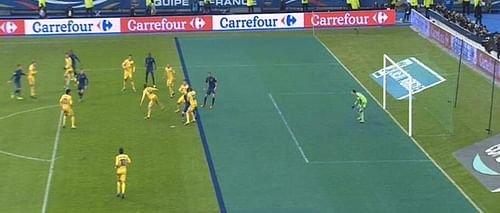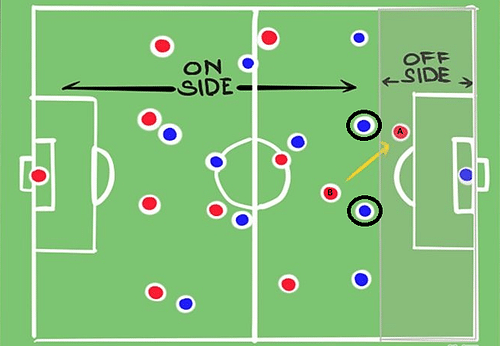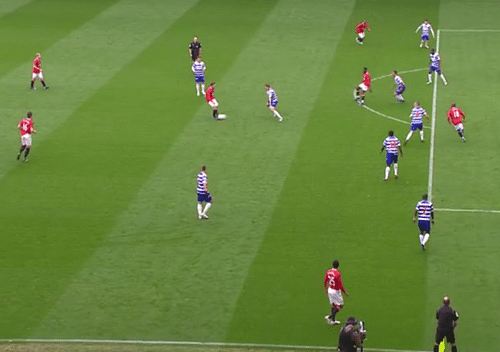
The 'plaguing' offside rule - explained!

Despite being the oldest and the shortest of the 17 laws of football, the offside rule remains the most perplexing of them all. Its widespread unpopularity owes to the fact that it is both a difficult rule to understand and even more so, to enforce. The offside rule is one law that has faced criticism ever since its inception, and is an open-ended debate even today.
Brief history and origin
The offside rule originated during football’s blooming days, back in the 19th century in secondary school games, to prevent the lazier kids from ‘sneaking’ or in simpler terms, hanging around the opponent’s goal post, waiting to take the ball and score easy goals in the process. At one stage the rule was so tough to overcome, that no goals were being scored at all. The rule was then amended to ensure a better balance of play and allow the games to be paced smoothly.
The need for the rule, even today, remains pretty much the same as when it was first introduced, which is to prevent the attackers from being stationed near the opposition goal line waiting for easy opportunities. If this was allowed, then both teams would just post an attacker or two in front of the goal and simply kick the ball towards them. This would destroy the idea of what is now known as 'beautiful football'.
Offside (Law 11, Association football)
“A player is in an offside position when he or she is in the opponents' half of the pitch and closer to the opponents' goal line than both the ball and the second-to-last opponent (usually the last defensive player in front of the goalkeeper)”
In simple terms, a player who does not currently have possession of the ball would be in an offside position if he is in the opposition team’s half and is nearer to their goal line than both the ball and the second-to-last opponent. Additionally, the opposition team’s goalkeeper must also be behind him.
In effect, this means a player is in an offside position if he is between the last defender and the opposing goal. The linesmen raise the flag in their hand whenever they spot a player is in an offside position at the time the ball is played to him, which acts as a signal for the referee to stop the play and award an indirect freekick to the opposing team.

It is a common misconception that a player can be ruled offside only if the ball is played forward to him, which is incorrect. In fact, it is the position of the ball and the player to whom the ball is played which matters rather than the direction in which it has been played.

In the above illustration, ‘A’ would be called for an offside offence, if and when player ‘B’ plays a through ball to him, as he is behind the second-to-last opponent(s), that is, the two encircled defenders. In such a situation the linesman would raise the flag in his hand and the referee would stop the play and award an indirect freekick to the other team. In this situation, the team in blue.
However, there are certain exceptions to the rule of offside:
- 1. Players cannot be offside in their own half of the field.
- 2. It is not possible to be offside from a throw-in, corner kick or goal kick.
- 3. If the player is level with the second-to-last opponent (the last defender) when the pass has been made, he can’t be ruled offside.
- 4. If the player does not interfere with the play, then it is not an offside offence, even if he is in an offside position. Generally, interference with play happens when the player plays the ball, attempts to play the ball or interferes in an opposing player’s play.
Implications
The offside rule in football has several virtuous implications in both offensive and defensive play.
In the first instance, from the attacking side’s point of view, timing of the passes and player positions become extremely important. The offensive team is essentially prohibited from indulging in what used to be called ‘cherry-picking’. The team cannot just leave a player standing on the opposition team’s goal line, waiting for a long ball, and nicking through an easy tap-in. The rule was aimed at encouraging movement of the ball forward as a team to create scoring opportunities. This essentially lead to the development of the system of short passes to move the ball further up the field towards the opponent’s goal.
The defence needs to know where the defensive line is and how to push it up and down the pitch to good effect. Communication is the key element, for failure to communicate across the back-line may lead to gaping holes in the defence for the strikers to exploit.
The Offside Trap

Pioneered in the early 20th century, the offside trap is a defensive tactic designed to force the attacking team into an offside position. The trap consists of the back-line of defenders stepping higher up the field at the right moment, isolating the striker in an offside position just before a pass is played to him.
Effectively using an offside trap is considered one of modern football’s hidden arts. Breaking it down is quite simple, but executing it to good effect is not. It requires careful timing from the defenders and is considered a risk, since moving up the field against the direction of attack may leave the goal exposed.
The offside trap has been termed the ‘fickle mistress’. While some great sides have used the tactic to good effect, even the slightest error in execution can lead to fatal circumstances.
How to execute the perfect offside trap
The first step is to keep the defensive back-line in a straight line. This means that all of the three or four defenders must be in a line parallel to the halfway line and move up and down the field in unison in defensive situations.
When the opposition team plays the forward ball, it should be up to one of the defenders – generally one of the centrebacks – to decide whether or not the line will step up or drop back, based solely on the position of the attacking player(s). If a few steps forward would suddenly put the striker offside, then he will move the line up and possibly win a free kick. If he believes the opponents will play the ball before the defense can step up, then he will likely tell his teammates to drop back and take a different defensive approach.
Sounds quite simple, doesn’t it? But trust me, it is a very, very difficult tactic to put into effect. All the steps to laying a successful offside trap, i.e., the identification, thought process, communication and coordination must be done ever so quickly. A slightest delay can be the difference between a goal and a no goal.
In a match between Inter Milan and Siena in the Italian Serie A back in 2010, the Siena team executed one of the best offside traps ever. Just as Mario Balotelli delivered a cross from a freekick at the edge of the box, the entire Siena defence made a sprint in the opposite direction of the goal, pulling the offside line back, which meant that had any of the Inter players made any contact with the ball (re: score a goal), it would’ve been disallowed on account of offside. The video of that particular incident can be watched here:
Controversies and criticisms
The offside rule is not new to criticism. In fact, it is the most controversial ruled ever applied to the game of football. Some of the flag mistakes make the fans upset even today, which has forced the FIFA to tweak its rule book on numerous occasions.
The 76th minute equalizer scored by Samuel Eto’o for Barcelona in an eventual triumph in 2006 Champions League final still boils the blood of most Gooners. With Arsenal leading 1-0 till that point, the end result could’ve been very different had that goal been ruled out. Who knows?
During last season’s match at St. James Park between Newcastle and Manchester City, the Magpies were denied a goal with the score still only 0-1. From the edge of the box, Chieck Tiote swung his left leg to score a sensational solo goal, only for the referee to play spoilsport.
From the replays it was pretty evident that three Newcastle players were standing in offside positions with Yoann Gouffran standing about five yards to the left of City keeper Joe Hart. As Tiote let fly, Gouffran was forced to duck in order to avoid being struck. According to the referee, Gouffran was active in the play, thus cancelling out the goal. Again, it became a matter of debate as to whether Gouffran’s actions did come under interference of play.
Another major controversy happened during Euro 2008’s Group C clash between the Netherlands and Italy. Rafael van der Vaart’s freekick was saved clear by Buffon, the Italian keeper. But in doing so he collided with his own team’s right back Christian Panucci, leaving him grimacing in pain at the side of the pitch. When Ruud van Nistelrooy turned in Giovanni van Bronckhorst’s cross for the opener, the striker appeared yards offside.
But the referee decided to allow the goal, much to the anger of the Azzuri supporters. The reason? The Swedish referee later gave an explanation that even though Panucci was off the pitch, he remained active. A closer examination of the rules proves him to be correct – there is a little-known law designed to stop players standing deliberately behind the touchline to get offside calls. But should the goal have been ruled out on the grounds that Panucci was seriously injured? Well, one can only debate.
Is it time for technology?
In all fairness, the job of the referee and his assistants is not an easy one by any standard. Their decisions are responsible for the mood changes of the fans, players and the managers alike every other weekend. Decisions such as those cited above are to be made within seconds, and that can be a pretty tough job in case of marginal calls – the line between an onside and an offside is razor thin.
Many have called for the introduction of video referrals such as those being used in hockey. One sport that has resisted high-tech assistance is football, so it remains to be seen whether FIFA will agree to the proposal any time soon.